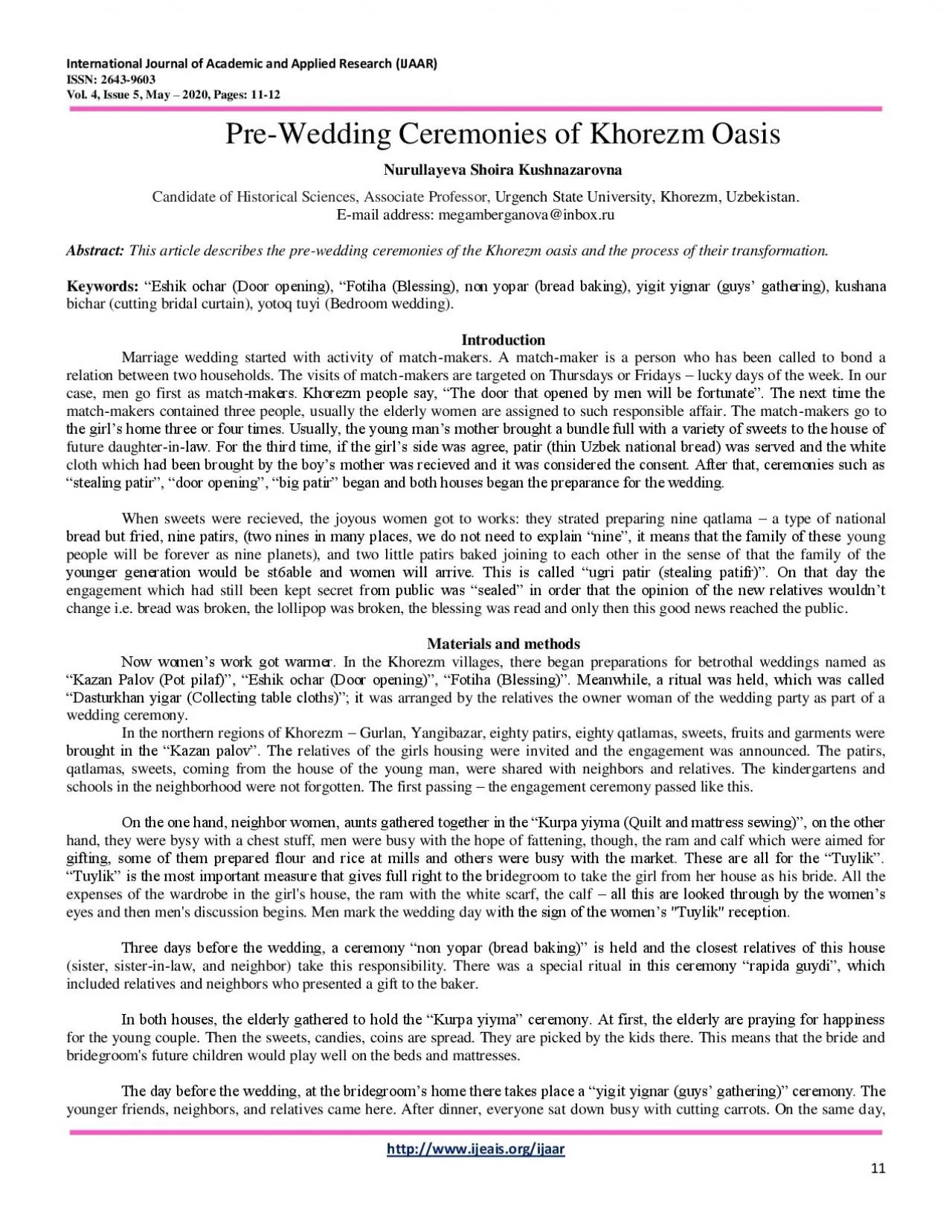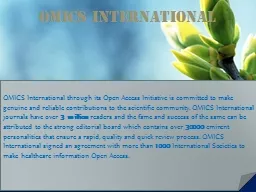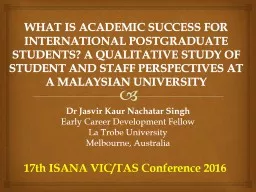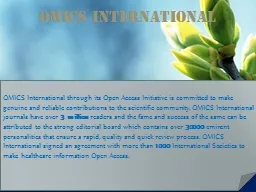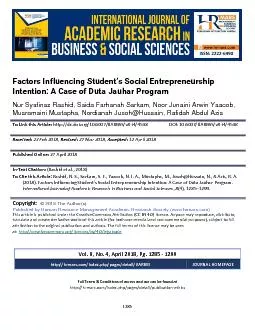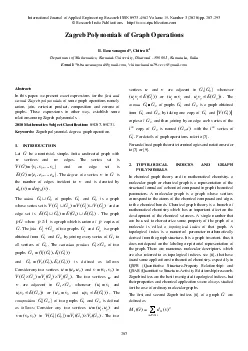PDF-International Journal of Academic and Applied Research
Author : cappi | Published Date : 2021-09-09
IJAARISSN 26439603Vol 4 Issue 5May 2020 Pages 1112httpwwwijeaisorgijaar11PreWedding Ceremonies of Khorezm OasisNurullayeva Shoira KushnazarovnaCandidate ofHistorical
Presentation Embed Code
Download Presentation
Download Presentation The PPT/PDF document "International Journal of Academic and Ap..." is the property of its rightful owner. Permission is granted to download and print the materials on this website for personal, non-commercial use only, and to display it on your personal computer provided you do not modify the materials and that you retain all copyright notices contained in the materials. By downloading content from our website, you accept the terms of this agreement.
International Journal of Academic and Applied Research: Transcript
Download Rules Of Document
"International Journal of Academic and Applied Research"The content belongs to its owner. You may download and print it for personal use, without modification, and keep all copyright notices. By downloading, you agree to these terms.
Related Documents

